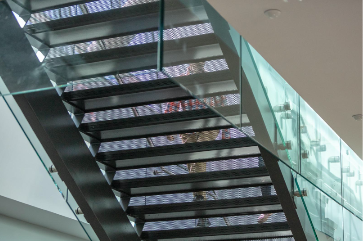Efficacy and Safety Data for ZOSTAVAX® (Zoster Vaccine Live), Merck’s Shingles Vaccine, in Adults Ages 50 to 59 Published in Clinical Infectious Diseases
April 2, 2012 8:04 am ET
WHITEHOUSE STATION, N.J.–(BUSINESS WIRE)–Merck (NYSE:MRK), known as MSD outside the United States and Canada, announced today that data from the pivotal Phase III study with ZOSTAVAX® (Zoster Vaccine Live) in adults ages 50 to 59 were published in the April 1 issue of Clinical Infectious Diseases. In this study, ZOSTAVAX, Merck’s vaccine for the prevention of herpes zoster, commonly known as shingles, significantly reduced the risk of developing shingles by nearly 70 percent in adults ages 50 to 59, compared with placebo. The results from this study provided the data that supported the U.S. Food and Drug Administration’s (FDA) expanded indication for ZOSTAVAX in March 2011 in this age group. ZOSTAVAX is the only shingles vaccine licensed for use in the United States.
“The results of this study demonstrate the importance of ZOSTAVAX to help prevent shingles in adults ages 50 to 59. More than 95 percent of adults 50 and older have had chickenpox, putting them at risk for developing shingles,” said Myron Levin, M.D., one of the study’s investigators, and professor of pediatrics and medicine, University of Colorado Denver School of Medicine, Section of Pediatric Infectious Diseases, The Children’s Hospital.
According to the U.S. Centers for Disease Control and Prevention (CDC), in the United States approximately 1 in 3 people will experience shingles in their lifetime, and nearly one million cases of shingles occur each year. The incidence and severity of shingles increase with age, with an estimated 70 percent of annual cases occurring in people 50 years of age or older. Once a person has had chickenpox, the varicella-zoster virus stays inside the body and can resurface later as shingles.
The CDC currently recommends a single dose of ZOSTAVAX for all appropriate people 60 years of age and older, regardless of whether they have had a prior case of shingles, noting that persons with chronic medical conditions may be vaccinated unless their condition constitutes a contraindication.
ZOSTAVAX is indicated for prevention of herpes zoster (shingles) in individuals 50 years of age and older. ZOSTAVAX is not indicated for the treatment of shingles or postherpetic neuralgia (PHN), and should not be used for prevention of chickenpox. ZOSTAVAX is contraindicated for individuals who are allergic to any of its ingredients, including gelatin or neomycin, have a weakened immune system, are on immunosuppressive therapy, or are pregnant or plan to become pregnant. Vaccination with ZOSTAVAX does not result in protection of all vaccine recipients.
ZOSTAVAX significantly reduced the incidence of shingles by nearly 70 percent in adults ages 50 to 59
In Merck’s ZOSTAVAX Efficacy and Safety Trial (ZEST), a randomized, double-blind, placebo-controlled study in adults who were 50 to 59 years of age at the time of vaccination, 11,184 volunteers received ZOSTAVAX and 11,212 received placebo. Study participants were monitored for the development of shingles for a median of 1.3 years (range 0 to 2 years) after receiving vaccination. Participants also were followed for adverse events (AEs) for 42 days postvaccination and for serious adverse events (SAEs) through six months postvaccination.
In this study, 30 cases of shingles occurred in the vaccine group versus 99 cases of shingles in the placebo group: efficacy of the vaccine was 69.8 percent (95 percent Confidence Interval [CI]: 54.1 percent, 80.6 percent), which met the study’s pre-specified criterion for success. Varicella-zoster virus antibody levels (Geometric Mean Titers, GMT), as measured by glycoprotein enzyme-linked immunosorbent assay (gpELISA) six weeks after vaccination, were increased 2.3-fold (95 percent CI: 2.2-fold, 2.4-fold) in the group of subjects who received ZOSTAVAX compared with subjects who received placebo, meeting the pre-specified success criterion for this endpoint.
There was an overall higher incidence of AEs in the vaccine group versus the placebo group; this difference was primarily due to different rates of injection-site AEs (63.6 percent for vaccine vs. 14.0 percent for placebo). The overall incidence of systemic adverse experiences reported within 42 days of vaccination was slightly higher for ZOSTAVAX than for placebo (35.4 percent for vaccine vs. 33.5 percent for placebo); however, no significant differences were observed between the two study groups for any individual systemic AEs with the exception of pain in the extremity and headache. Serious adverse events occurred at a similar rate in subjects vaccinated with ZOSTAVAX or placebo within 42 days of vaccination (0.6 percent for vaccine vs. 0.5 percent for placebo) and 182 days of vaccination (2.1 percent for vaccine vs. 1.9 percent for placebo). An anaphylactic reaction was reported for one study participant who received ZOSTAVAX.
Supply of ZOSTAVAX
Merck cleared all backorders of ZOSTAVAX in late December 2011 and resumed normal, two-day shipping for new orders. Consumers and healthcare providers can visit www.zostavax.com to search an online database called the “Directory to Find ZOSTAVAX” to obtain a list of physician offices or pharmacies within their selected area that offer ZOSTAVAX.
Managed care coverage for ZOSTAVAX
Based on historical coverage information, Merck estimates that over 90 percent of people 60 and older in the United States who have private health insurance are in plans that have approved reimbursement of ZOSTAVAX, and Medicare Part D plans covering over 90 percent of Part D enrollees in the United States have included ZOSTAVAX on formulary. Also, information available to Merck suggests that approximately 35 percent of individuals age 50 to 59 who have health insurance are in plans that have approved reimbursement for ZOSTAVAX for this age group. Whether a person has coverage, and the amount of reimbursement, depends on the person’s benefit design, including any applicable co-pays, coverage limitations, co-insurance and/or deductibles and the reimbursement rate adopted by each plan. ZOSTAVAX is also a covered medical benefit for people 60 and older under the U.S. Veterans Health Administration and TRICARE, the health plan for the U.S. Department of Defense Military Health System.
Select Safety Information
A reduced immune response to ZOSTAVAX was observed in individuals who received concurrent administration of PNEUMOVAX®23 (Pneumococcal Vaccine Polyvalent) and ZOSTAVAX compared with individuals who received these vaccines 4 weeks apart. Consider administration of the two vaccines separated by at least 4 weeks.
Serious vaccine-related adverse reactions that have occurred following vaccination with ZOSTAVAX include asthma exacerbation and polymyalgia rheumatica. Other serious adverse events reported following vaccination with ZOSTAVAX include cardiovascular events (congestive heart failure, pulmonary edema). The rate of serious adverse reactions from Days 0 to 42 postvaccination may be increased. Common adverse reactions occurring in ≥1% of vaccinated individuals during clinical trials include injection-site reactions (erythema, pain/tenderness, swelling, hematoma, pruritus, warmth) and headache.
Transmission of vaccine virus may occur between vaccinees and susceptible contacts. Deferral should be considered in acute illness (for example, in the presence of fever) or in patients with active untreated tuberculosis.
Vaccination with ZOSTAVAX does not result in protection of all vaccine recipients.
Shingles is a painful disease that can be debilitating
Shingles is marked by a blistering rash and is caused by the reactivation of the same virus that causes chickenpox. After someone has had chickenpox, the virus never leaves their body, remaining inactive in certain nerve roots in the body for many years. If the virus becomes active again — usually later in life — it causes shingles.
The first signs of shingles are often felt and may not be seen, and can include itching, tingling, or burning. Later, a painful rash of fluid-filled blisters appears, usually on one side of the body or face. The rash can last up to 30 days, and for most people the pain lessens as the rash heals. Some people who develop shingles experience PHN, long-term nerve pain that can last for months, even years.
About Merck
Today’s Merck is a global healthcare leader working to help the world be well. Merck is known as MSD outside the United States and Canada. Through our prescription medicines, vaccines, biologic therapies, and consumer care and animal health products, we work with customers and operate in more than 140 countries to deliver innovative health solutions. We also demonstrate our commitment to increasing access to healthcare through far-reaching policies, programs and partnerships. For more information, visit www.merck.com and connect with us on Twitter, Facebook and YouTube.
Forward-Looking Statement
This news release includes “forward-looking statements” within the meaning of the safe harbor provisions of the United States Private Securities Litigation Reform Act of 1995. Such statements may include, but are not limited to, statements about the benefits of the merger between Merck and Schering-Plough, including future financial and operating results, the combined company’s plans, objectives, expectations and intentions and other statements that are not historical facts. Such statements are based upon the current beliefs and expectations of Merck’s management and are subject to significant risks and uncertainties. Actual results may differ from those set forth in the forward-looking statements.
The following factors, among others, could cause actual results to differ from those set forth in the forward-looking statements: the possibility that all of the expected synergies from the merger of Merck and Schering-Plough will not be realized, or will not be realized within the expected time period; the impact of pharmaceutical industry regulation and health care legislation in the United States and internationally; Merck’s ability to accurately predict future market conditions; dependence on the effectiveness of Merck’s patents and other protections for innovative products; and the exposure to litigation and/or regulatory actions.
Merck undertakes no obligation to publicly update any forward-looking statement, whether as a result of new information, future events or otherwise. Additional factors that could cause results to differ materially from those described in the forward-looking statements can be found in Merck’s 2011 Annual Report on Form 10-K and the company’s other filings with the Securities and Exchange Commission (SEC) available at the SEC’s Internet site (www.sec.gov).
Please see Prescribing Information for ZOSTAVAX® at http://www.merck.com/product/usa/pi_circulars/z/zostavax/zostavax_pi.pdf and Patient Information for ZOSTAVAX ® at http://www.merck.com/product/usa/pi_circulars/z/zostavax/zostavax_ppi.pdf.
ZOSTAVAX® is a registered trademark of Merck Sharp & Dohme Corp., a subsidiary of Merck & Co., Inc., Whitehouse Station, N.J., U.S.A.
Merck
Media:
Pamela Eisele, 908-423-5042
Jennifer Allen Woodruff, 215-652-0572
or
Investor:
Carol Ferguson, 908-423-4465



